Inside The New York Botanical Garden
Esther Jackson
Posted in From the Library on November 14 2017, by Esther Jackson
Esther Jackson is the Public Services Librarian at NYBG’s LuEsther T. Mertz Library where she manages Reference and Circulation services and oversees the Plant Information Office. She spends much of her time assisting researchers, providing instruction related to library resources, and collaborating with NYBG staff on various projects related to Garden initiatives and events.
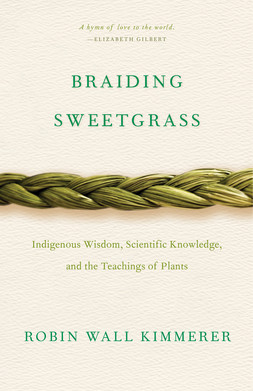 I first discovered the writings of Robin Wall Kimmerer, Ph.D., when taking the NYBG Plant Diversity course taught by Dr. James Boyer. As we covered the different groups of plants in class, I wanted to learn more. When it came time to learn about mosses, Kimmerer’s Gathering Moss: A Natural and Cultural History of Mosses was my supplemental reading of choice. By the time I was done with the book, I was hooked. I quickly purchased and read Braiding Sweetgrass: Indigenous Wisdom, Scientific Knowledge, and the Teachings of Plants, eventually donating my copy to the NYBG Library’s circulating collection and heartily recommending it to those who visit the library looking for reading suggestions. When I learned that Kimmerer would be lecturing at NYBG in December, I leapt at the chance to tell readers of Plant Talk about these two books that I had so enjoyed.
I first discovered the writings of Robin Wall Kimmerer, Ph.D., when taking the NYBG Plant Diversity course taught by Dr. James Boyer. As we covered the different groups of plants in class, I wanted to learn more. When it came time to learn about mosses, Kimmerer’s Gathering Moss: A Natural and Cultural History of Mosses was my supplemental reading of choice. By the time I was done with the book, I was hooked. I quickly purchased and read Braiding Sweetgrass: Indigenous Wisdom, Scientific Knowledge, and the Teachings of Plants, eventually donating my copy to the NYBG Library’s circulating collection and heartily recommending it to those who visit the library looking for reading suggestions. When I learned that Kimmerer would be lecturing at NYBG in December, I leapt at the chance to tell readers of Plant Talk about these two books that I had so enjoyed.
Kimmerer is a compelling writer who has the ability to look at plants—organisms—through multiple lenses. Her formal training in botany has given her the ability to write about plants as a scientist, while her work with indigenous cultures and their history gives her writing a highly-personal and humanized perspective. Her works are immensely readable and delightful to those who love plants, ecology, and the interactions between humans and the environment. Although a collection of personal essays, Gathering Moss has more of a scientific grounding, whereas Braiding Sweetgrass is more interdisciplinary, and more appropriate for a general audience. Both are interesting and engaging and can be enjoyed by scientists and non-scientists.
Read More
Posted in From the Library on October 26 2017, by Esther Jackson
Esther Jackson is the Public Services Librarian at NYBG’s LuEsther T. Mertz Library where she manages Reference and Circulation services and oversees the Plant Information Office. She spends much of her time assisting researchers, providing instruction related to library resources, and collaborating with NYBG staff on various projects related to Garden initiatives and events.
 Garden Renovation: Transform Your Yard into the Garden of Your Dreams by Bobbie Schwartz for Timber Press is a practical guide to giving an existing yard area a “make-over.” Homeowners can use Garden Renovation to assess current landscapes and decide on redesign projects of varying complexity. Especially interesting is a section on evaluating current hardscaped areas such as driveways and paths. Refreshingly, little in the book is dedicated to “plant palettes,” making Garden Renovation singularly focused on landscape assessment from a higher level.
Garden Renovation: Transform Your Yard into the Garden of Your Dreams by Bobbie Schwartz for Timber Press is a practical guide to giving an existing yard area a “make-over.” Homeowners can use Garden Renovation to assess current landscapes and decide on redesign projects of varying complexity. Especially interesting is a section on evaluating current hardscaped areas such as driveways and paths. Refreshingly, little in the book is dedicated to “plant palettes,” making Garden Renovation singularly focused on landscape assessment from a higher level.
In Garden Renovation Schwartz has created a resource for those who know that something in their landscape has to change but aren’t sure about the next steps. Whether the solution is a DIY project or hiring a professional, Garden Renovation will teach readers how to assess a landscape and make informed decisions about its future.
Read More
Posted in From the Library on October 12 2017, by Esther Jackson
Esther Jackson is the Public Services Librarian at NYBG’s LuEsther T. Mertz Library where she manages Reference and Circulation services and oversees the Plant Information Office. She spends much of her time assisting researchers, providing instruction related to library resources, and collaborating with NYBG staff on various projects related to Garden initiatives and events.
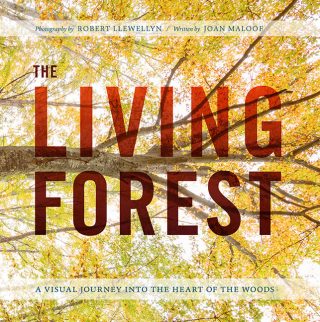 The Living Forest: A Visual Journey into the Heart of the Woods is a new book from Timber Press written by Joan Maloof with photography by Robert Llewellyn. Living Forest is another in the line of more ecology-minded books from this popular publisher of gardening and garden design books.
The Living Forest: A Visual Journey into the Heart of the Woods is a new book from Timber Press written by Joan Maloof with photography by Robert Llewellyn. Living Forest is another in the line of more ecology-minded books from this popular publisher of gardening and garden design books.
First and foremost, The Living Forest is a beautiful book. Llewellyn, as some keen readers might recall, is the photographic mind behind the extremely appealing series Seeing Trees, Seeing Flowers, and Seeing Seeds, which I reviewed for Plant Talk earlier this year. As is the case in the Seeing series, Llewellyn’s photographs are detailed, brilliant, and immersive. With a mix of subjects including flora and fauna, shot both close-up and in landscape views, Llewellyn’s work and Maloof’s words evoke the forest on every page. My personal favorite photo is a landscape shot of beech trees (possibly Fagus grandifolia) in late autumn. Love for the woods knows no season, but, for me, autumn is the time that I like best. Llewellyn simply and eloquently captured one of my favorite forest scenes and all of the emotions such a scene inspires.
Read More
Posted in From the Library on September 20 2017, by Esther Jackson
Esther Jackson is the Public Services Librarian at NYBG’s LuEsther T. Mertz Library where she manages Reference and Circulation services and oversees the Plant Information Office. She spends much of her time assisting researchers, providing instruction related to library resources, and collaborating with NYBG staff on various projects related to Garden initiatives and events.
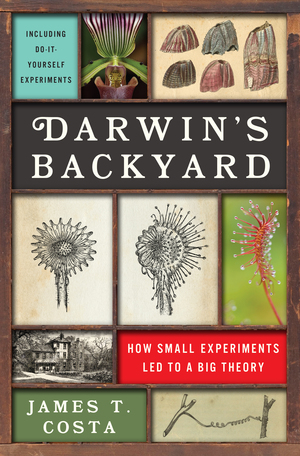 Darwin’s Backyard: How Small Experiments Led to a Big Theory is an interesting hybrid of a book. Author James T. Costa has written extensively on both Charles Darwin and Alfred Russel Wallace, and he brings his years of research to bear in Darwin’s Backyard.
Darwin’s Backyard: How Small Experiments Led to a Big Theory is an interesting hybrid of a book. Author James T. Costa has written extensively on both Charles Darwin and Alfred Russel Wallace, and he brings his years of research to bear in Darwin’s Backyard.
The scope of Darwin’s Backyard is strictly relegated to documenting and explaining Darwin’s experimentation process and many of his experiments that might be conducted at home. At times, the narrative and pacing seems similar to Andrea Wulf’s 2015 book, The Invention of Nature: Alexander von Humboldt’s New World. Wulf and Costa write not only about the scientist at the center of their novels, but also about the scientific community within which each scholar developed and interacted. Thus, in addition to documenting Darwin’s activities, Costa writes of his relationship with other scientists of the time, including Sir Charles Lyell.
Among other work, Lyell popularized the ideas of James Hutton whose geological theories were foundational to the way that we currently think about the earth and its processes. Hutton’s theory of Uniformitarianism, a theory which Lyell and Darwin discussed, is the idea that “Earth’s geologic processes acted in the same manner and with essentially the same intensity in the past as they do in the present and that such uniformity is sufficient to account for all geologic change.” This theory is also applicable in a broader sense across the sciences as a foundational idea that basic processes today are likely to have been similar or identical in the past, i.e., that we can use modern observations and ideas to understand past patterns, unless, of course, there is evidence that the processes themselves have changed.
Read More
Posted in From the Library on September 18 2017, by Esther Jackson
Esther Jackson is the Public Services Librarian at NYBG’s LuEsther T. Mertz Library where she manages Reference and Circulation services and oversees the Plant Information Office. She spends much of her time assisting researchers, providing instruction related to library resources, and collaborating with NYBG staff on various projects related to Garden initiatives and events.
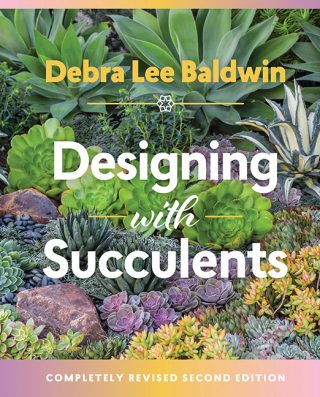 As I browsed Designing with Succulents, recently published in its revised second edition by Debra Lee Baldwin for Timber Press, I attracted some attention. “I love succulents,” multiple co-workers informed me, looking longingly at Baldwin’s book. After encouraging them to check out the library’s copy, I went back to my reading for this review. I have to agree with my coworkers. I love succulents! I love caring for my small houseplant collection as well as seeing ambitious and riotous garden designs and plantings that feature these plants.
As I browsed Designing with Succulents, recently published in its revised second edition by Debra Lee Baldwin for Timber Press, I attracted some attention. “I love succulents,” multiple co-workers informed me, looking longingly at Baldwin’s book. After encouraging them to check out the library’s copy, I went back to my reading for this review. I have to agree with my coworkers. I love succulents! I love caring for my small houseplant collection as well as seeing ambitious and riotous garden designs and plantings that feature these plants.
Succulents are appealing for many reasons including their bright, bold colors, use in low-water landscapes, and relatively low-maintenance as both house and garden plants. In her new book, Baldwin scintillates those who are already succulent enthusiasts and inspires those who have dreamed about growing succulents but haven’t yet taken the plunge.
Read More
Posted in From the Library on September 11 2017, by Esther Jackson
Esther Jackson is the Public Services Librarian at NYBG’s LuEsther T. Mertz Library where she manages Reference and Circulation services and oversees the Plant Information Office. She spends much of her time assisting researchers, providing instruction related to library resources, and collaborating with NYBG staff on various projects related to Garden initiatives and events.
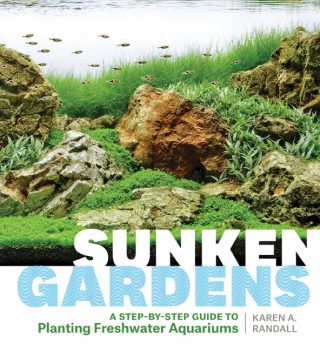 Sunken Gardens: A step-by-step guide to planning freshwater aquariums offers curious would-be-aquarium owners an introduction to the world of aquatic plant care in the home. Author Karen A. Randall shares with readers everything they need to plan, design, and maintain freshwater aquariums. Readers who aren’t familiar with aquarium gardening will feel a sense of information overload (in a good way!) when reading Sunken Gardens and enjoying Randall’s beautiful photographs. Topics including an introduction to aquatic plants in the wild, water chemistry, equipment, substrates, fertilizers, and tank maintenance, plant care, animal choices, aqua-scaping styles, and trouble-shooting all have their day. There is also an extensive plant profiles section for readers looking for inspiration. With Randall’s book in hand, the hobby of aquarium gardening is well in reach!
Sunken Gardens: A step-by-step guide to planning freshwater aquariums offers curious would-be-aquarium owners an introduction to the world of aquatic plant care in the home. Author Karen A. Randall shares with readers everything they need to plan, design, and maintain freshwater aquariums. Readers who aren’t familiar with aquarium gardening will feel a sense of information overload (in a good way!) when reading Sunken Gardens and enjoying Randall’s beautiful photographs. Topics including an introduction to aquatic plants in the wild, water chemistry, equipment, substrates, fertilizers, and tank maintenance, plant care, animal choices, aqua-scaping styles, and trouble-shooting all have their day. There is also an extensive plant profiles section for readers looking for inspiration. With Randall’s book in hand, the hobby of aquarium gardening is well in reach!
Read More
Posted in From the Library on September 4 2017, by Esther Jackson
Esther Jackson is the Public Services Librarian at NYBG’s LuEsther T. Mertz Library where she manages Reference and Circulation services and oversees the Plant Information Office. She spends much of her time assisting researchers, providing instruction related to library resources, and collaborating with NYBG staff on various projects related to Garden initiatives and events.
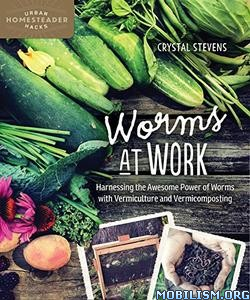 Worms at Work: Harnessing the awesome power of worms with vermiculture and vermicomposting is a new book on home composting from Crystal Stevens and New Society Publishers. The book includes some general introductory information for those interested in starting home worm composting operations and also includes a few activities for teachers who want to use compost and worms in the classroom. Local readers interested in learning more about home composting and home worm bins should check out the NYC Compost Project funded by the NYC Department of Sanitation and hosted by the New York Botanical Garden in the Bronx.
Worms at Work: Harnessing the awesome power of worms with vermiculture and vermicomposting is a new book on home composting from Crystal Stevens and New Society Publishers. The book includes some general introductory information for those interested in starting home worm composting operations and also includes a few activities for teachers who want to use compost and worms in the classroom. Local readers interested in learning more about home composting and home worm bins should check out the NYC Compost Project funded by the NYC Department of Sanitation and hosted by the New York Botanical Garden in the Bronx.
Read More
Posted in From the Library on August 17 2017, by Esther Jackson
Esther Jackson is the Public Services Librarian at NYBG’s LuEsther T. Mertz Library where she manages Reference and Circulation services and oversees the Plant Information Office. She spends much of her time assisting researchers, providing instruction related to library resources, and collaborating with NYBG staff on various projects related to Garden initiatives and events.
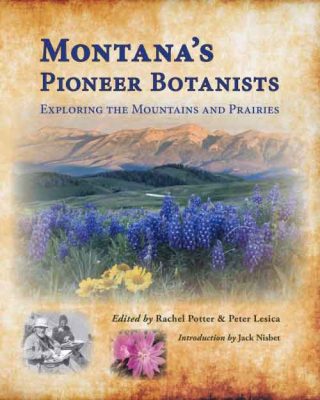 Montana’s Pioneer Botanists: Exploring the Mountains and Prairies is a new book from editors Rachel Potter and Peter Lesica, with an introduction by Jack Nisbet.
Montana’s Pioneer Botanists: Exploring the Mountains and Prairies is a new book from editors Rachel Potter and Peter Lesica, with an introduction by Jack Nisbet.
Montana’s Pioneer Botanists, a collection of biographies of regional botanists working in Montana, is the type of book that I really enjoy. Collections like this are essential for documenting and remembering important regional workers while sharing their legacy with the world. As is the case with other books of this ilk, some of the figures profiled in Montana’s Pioneer Botanists are known to a wider audience (Meriwether Lewis, for example), while others are beloved local heroes. In his introduction, Nisbet writes, “The subjects here hold a keen awareness of those who came before them, lending a strong sense of continuity to the entire project.” This continuity travels beyond Montana documenting ties between Montana botanists and the wider world, including the New York Botanical Garden. For example, botanist Robert Statham Williams (1859-1945) collected plants in Montana for years before joining the New York Botanical Garden in 1899. John Leiberg (1853-1913), another botanist profiled in this work, was a correspondent of Elizabeth Britton throughout his career.
Read More
Posted in From the Library on August 7 2017, by Esther Jackson
Esther Jackson is the Public Services Librarian at NYBG’s LuEsther T. Mertz Library where she manages Reference and Circulation services and oversees the Plant Information Office. She spends much of her time assisting researchers, providing instruction related to library resources, and collaborating with NYBG staff on various projects related to Garden initiatives and events.
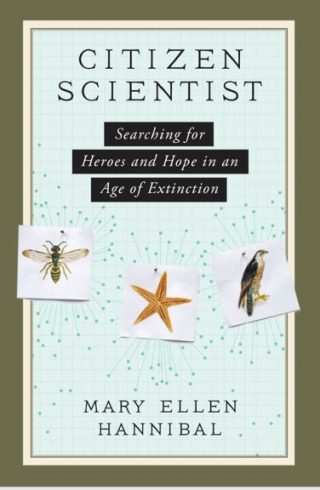 Citizen Scientist: Searching for Heroes and Hope in an Age of Extinction is a book from popular science writer Mary Ellen Hannibal on the topic of citizen science.
Citizen Scientist: Searching for Heroes and Hope in an Age of Extinction is a book from popular science writer Mary Ellen Hannibal on the topic of citizen science.
Citizen science is scientific research conducted, in whole or in part, by amateur (or nonprofessional) scientists. Citizen science projects can include all manner of tasks and objectives, and many popular projects involve non-scientists making reports about organisms they have observed, such as bloom times, or phenology, of various plants. Still other projects involve virtual volunteering, such as transcribing specimen label data of herbarium sheets (or other specimens) that have been digitized and made available online.
In her book, Hannibal writes about her experiences working as a citizen scientist on various projects, mostly involving the observation of animals under the direction of trained professional scientists. It is clear that Hannibal enjoys the English language, and this memoir of sorts is littered with references to literary works, historical figures, and poetry-like observations of the natural world. It’s not really a science book at all, although Hannibal does write in praise of the natural world.
Read More
Posted in From the Library on July 31 2017, by Esther Jackson
Esther Jackson is the Public Services Librarian at NYBG’s LuEsther T. Mertz Library where she manages Reference and Circulation services and oversees the Plant Information Office. She spends much of her time assisting researchers, providing instruction related to library resources, and collaborating with NYBG staff on various projects related to Garden initiatives and events.
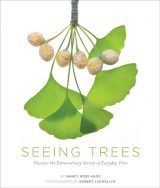 Seeing Trees, Seeing Flowers, and Seeing Seeds are three beautiful books by the photographer Robert Llewellyn with authors Nancy Ross Hugo and Teri Dunn Chace. Together, these three books represent Llewellyn’s fascination with the plant kingdom. This series of works explores mainly the reproductive parts of plants with text accompanying almost painterly photographs of different species.
Seeing Trees, Seeing Flowers, and Seeing Seeds are three beautiful books by the photographer Robert Llewellyn with authors Nancy Ross Hugo and Teri Dunn Chace. Together, these three books represent Llewellyn’s fascination with the plant kingdom. This series of works explores mainly the reproductive parts of plants with text accompanying almost painterly photographs of different species.
In a 2015 interview for Mother Nature Network, Llewellyn stated of himself that, “there was a sudden realization that trees were alive. They were another civilization living with us on Earth. They were born and they died. They made flowers and seeds and sent their children out into the world. I wanted to know more, so I studied and photographed parts on the tree. I started looking at Earth as if I was visiting another planet for the first time. I was amazed at what was hiding in plain sight.”
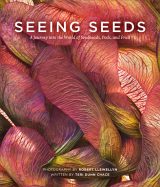 This sense of amazement has been successfully transferred to readers of his works. Using a technique called “focus stacking,” Llewellyn may take 100 frames or more of a plant portrait with each photograph having a different focal point. Then the frames are input to a “stacking” software and rendered as a single image.
This sense of amazement has been successfully transferred to readers of his works. Using a technique called “focus stacking,” Llewellyn may take 100 frames or more of a plant portrait with each photograph having a different focal point. Then the frames are input to a “stacking” software and rendered as a single image.
This technique allows for Llewellyn to capture botanical details that even the most steady-handed traditional macro-photographer would be unlikely to achieve.
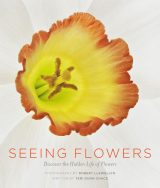 The large color photographs in the Seeing series make the plants seem, at times, unreal or alien in their beauty. Llewellyn for the most part seems to focus on species native to the Mid-Atlantic United States, possibly because of his need to photograph live material as opposed to herbarium specimens. As a result, readers hailing from this region will recognize many of the plants in these three works, gaining a new perspective on familiar friends. Of the three works, my favorite is Seeing Flowers. In this book, author Teri Dunn Chace has arranged the text so that the flower photographs are grouped by botanical family. This adds an element of botanical scholarship to what might otherwise be more of an art book. Indeed, my only real criticism of the Seeing series is that the authors and photographer don’t always provide botanical names for the organisms featured. Unfortunately, this means that Seeing Trees and Seeing Seeds have less scientific or teaching value than they do artistic merit.
The large color photographs in the Seeing series make the plants seem, at times, unreal or alien in their beauty. Llewellyn for the most part seems to focus on species native to the Mid-Atlantic United States, possibly because of his need to photograph live material as opposed to herbarium specimens. As a result, readers hailing from this region will recognize many of the plants in these three works, gaining a new perspective on familiar friends. Of the three works, my favorite is Seeing Flowers. In this book, author Teri Dunn Chace has arranged the text so that the flower photographs are grouped by botanical family. This adds an element of botanical scholarship to what might otherwise be more of an art book. Indeed, my only real criticism of the Seeing series is that the authors and photographer don’t always provide botanical names for the organisms featured. Unfortunately, this means that Seeing Trees and Seeing Seeds have less scientific or teaching value than they do artistic merit.
Many of Llewellyn’s photographs can be viewed online. If your interest is piqued by his website, I strongly encourage you to seek out the Seeing series, and prepare for your breath to be taken away.
 I first discovered the writings of Robin Wall Kimmerer, Ph.D., when taking the NYBG Plant Diversity course taught by Dr. James Boyer. As we covered the different groups of plants in class, I wanted to learn more. When it came time to learn about mosses, Kimmerer’s Gathering Moss: A Natural and Cultural History of Mosses was my supplemental reading of choice. By the time I was done with the book, I was hooked. I quickly purchased and read Braiding Sweetgrass: Indigenous Wisdom, Scientific Knowledge, and the Teachings of Plants, eventually donating my copy to the NYBG Library’s circulating collection and heartily recommending it to those who visit the library looking for reading suggestions. When I learned that Kimmerer would be lecturing at NYBG in December, I leapt at the chance to tell readers of Plant Talk about these two books that I had so enjoyed.
I first discovered the writings of Robin Wall Kimmerer, Ph.D., when taking the NYBG Plant Diversity course taught by Dr. James Boyer. As we covered the different groups of plants in class, I wanted to learn more. When it came time to learn about mosses, Kimmerer’s Gathering Moss: A Natural and Cultural History of Mosses was my supplemental reading of choice. By the time I was done with the book, I was hooked. I quickly purchased and read Braiding Sweetgrass: Indigenous Wisdom, Scientific Knowledge, and the Teachings of Plants, eventually donating my copy to the NYBG Library’s circulating collection and heartily recommending it to those who visit the library looking for reading suggestions. When I learned that Kimmerer would be lecturing at NYBG in December, I leapt at the chance to tell readers of Plant Talk about these two books that I had so enjoyed.










